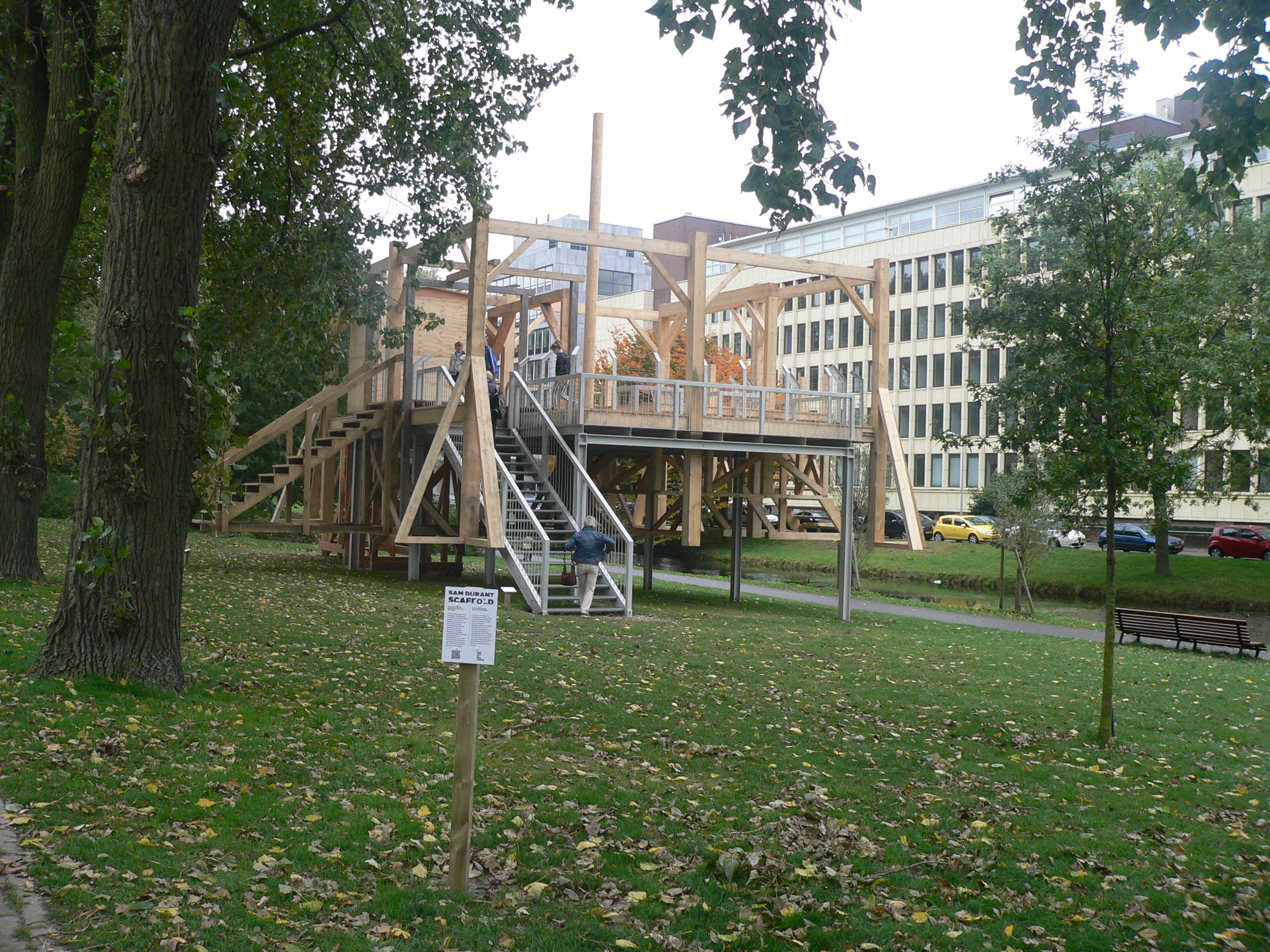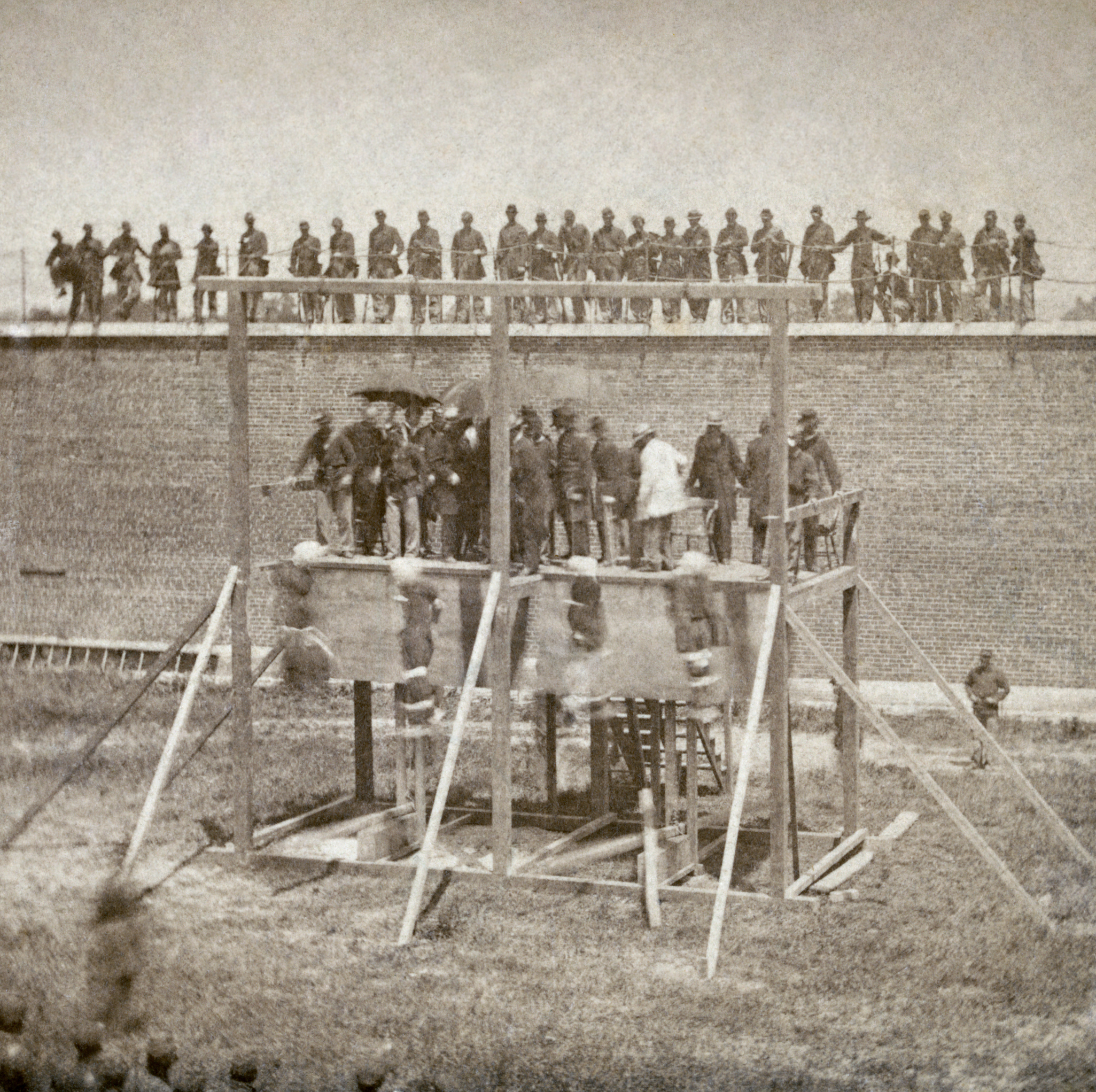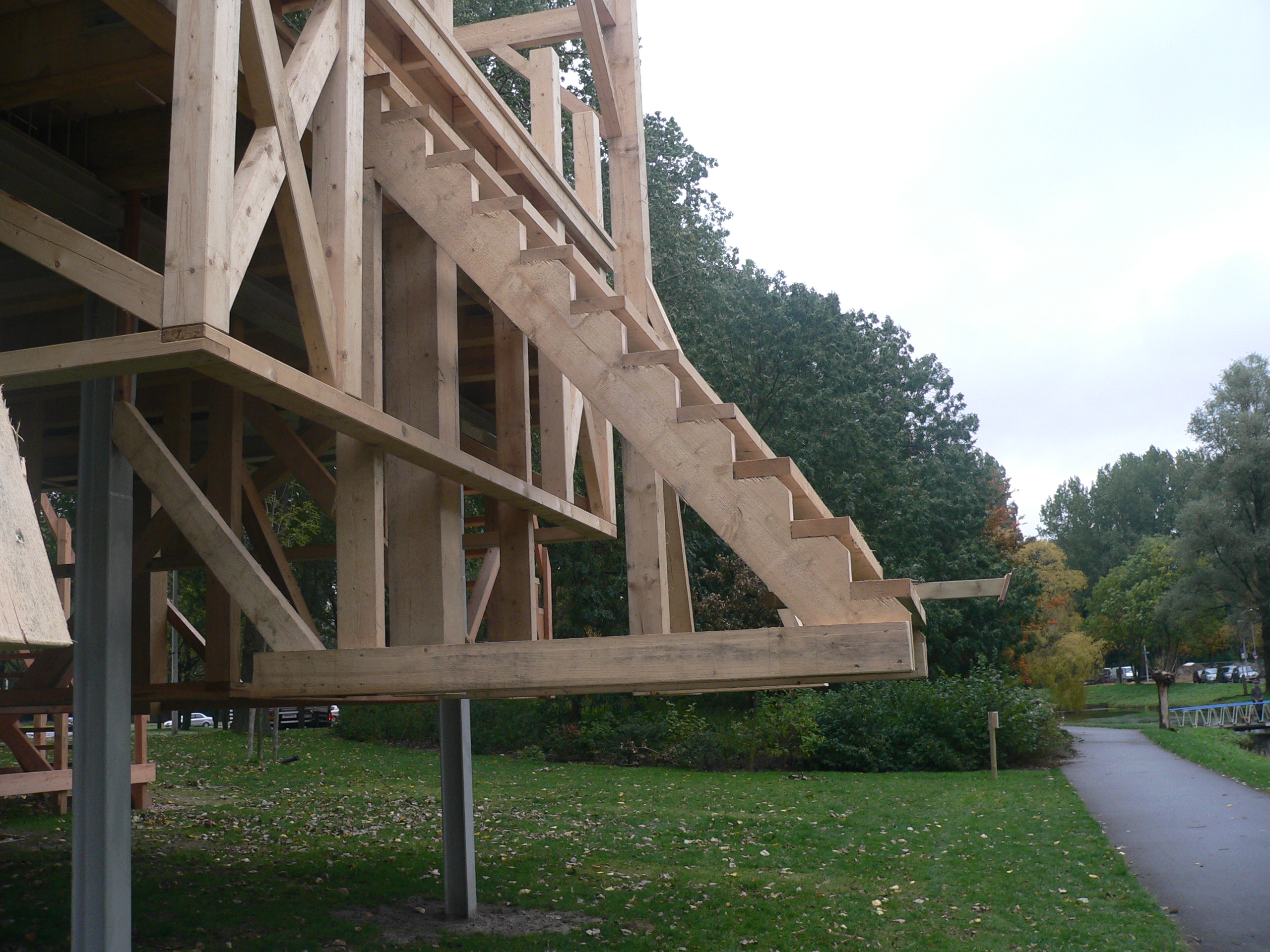Scaffold: an architectural perspective on the death penalty in The Hague
by Fiana Gantheret
Scaffold
The wooden installation by the American artist Sam Durant looks like a gigantic children’s play structure and stands on the grass next to the International Zone in The Hague, The Netherlands. The sign at the bottom of the stairs is daunting: “Access at your own risk – Children under guidance only – Beware of slippery and protruding parts – Do not climb”. A large metallic staircase located on one side of the installation brings the visitor to a wooden floor made up of several levels.
Each level is composed of a reconstructed wooden gallow that was used in an execution “of historical significance in the United States”, one can read on a sign visible on the platform. The announcement at the bottom of the installation, the “protruding parts”, the slippery stairs… seems to have a meaning : one cannot approach – let alone access – a scaffold without risk and roughness being involved.
Seven levels. Seven gallows. And fifty lives, among which thirty-eight Dakota Indians, hung in 1863 on the Mankato Gallows, the largest mass execution in the history of the United States, as well as four of the convicted conspirators in the assassination of President Abraham Lincoln, in 1865. Among them was the first woman, Mary Surratt, to be executed in the United States.
Five stairs are attached to the installation, but only two go all the way to the ground. Three of them stop before reaching the earth, as a representation of the lives that never left the gallows.
Photos of the opening and concert that took place on 20 October 2013 can be found here.
See You in The Hague
Scaffold is part of See You in The Hague, “a multifaceted narrative about the bright and dark side of The Hague as International City of Peace and Justice”. See You in The Hague is a cultural program organized by Stroom Den Haag, an independent foundation that focuses on art, architecture and urban environment through various activities such as exhibitions, workshops and lectures.
Presented as part of this cultural program that started in September 2013, the exhibition Double Centre by Dutch artist Charles van Otterdijk is visible from 7 September until 17 November 2013 at the premises of Stroom Den Haag. More information can be found here.
Also visible until 17 November in the library window of Stroom Den Haag, “The Hague World Capital”, a drawing by Marjolijn van der Meij, in which the dream of Pieter Eijkman and Paul Horrix of a “World Capital of Internationalism” is represented on the dunes of The Hague. More information can be found here.
Finally, the exhibition The Good Cause: Architecture of Peace is planned for 2014, after having been presented in Montréal in 2011 and in Kigali in 2012. The exhibition asks the question that is at the core of Architecture of Peace, an international research and action project: can architecture establish and perpetuate peace?




